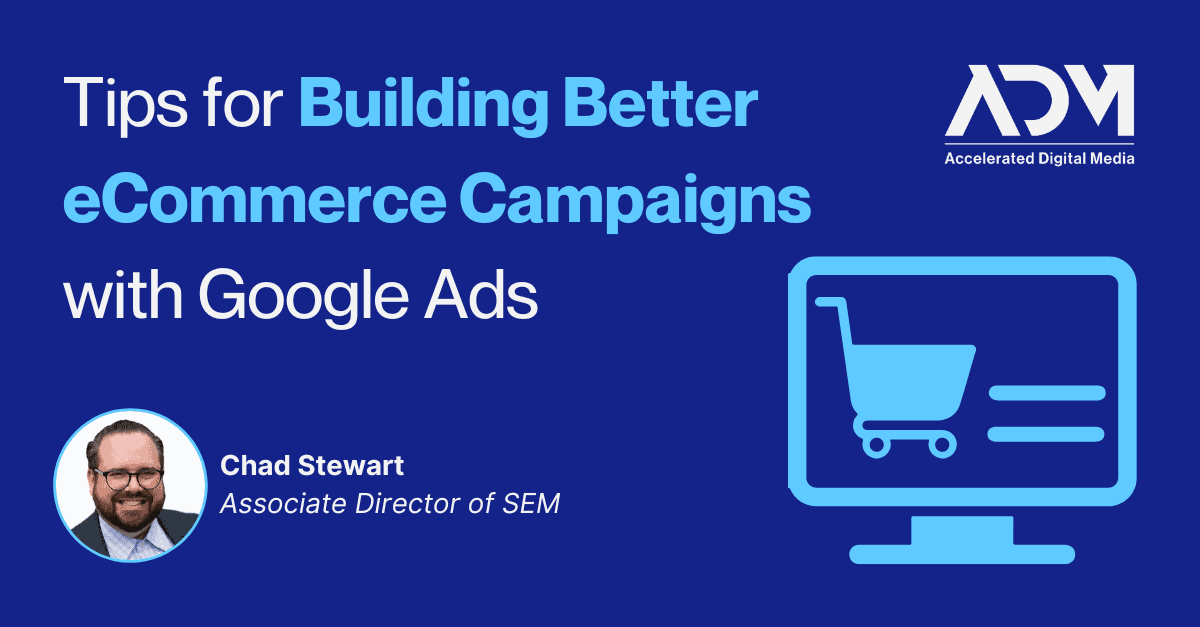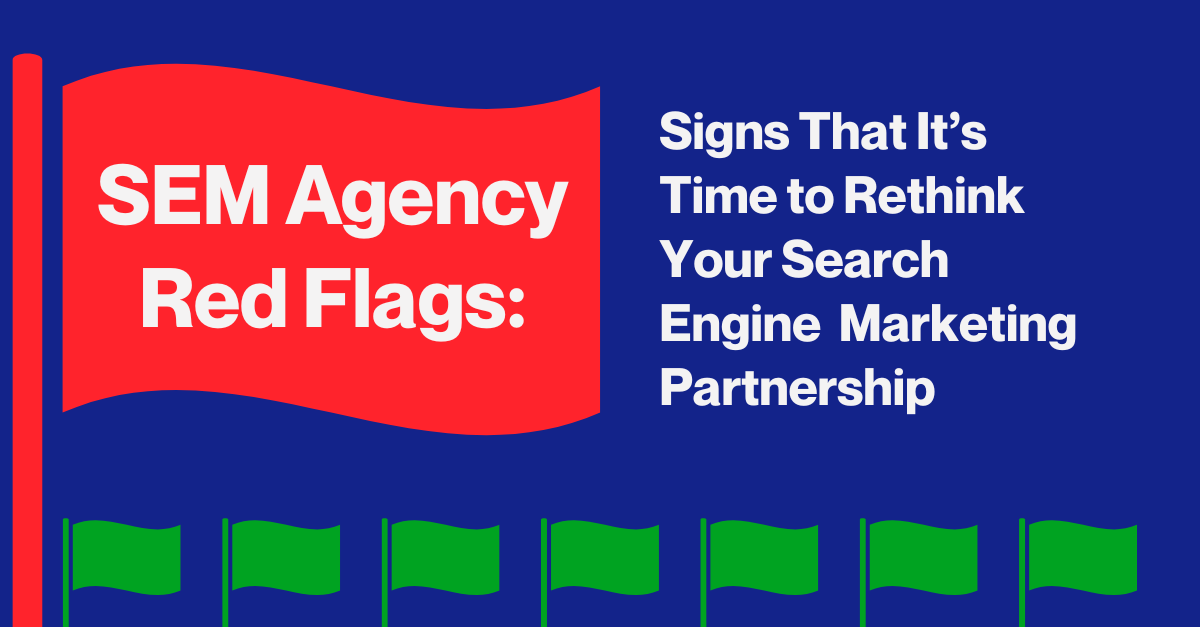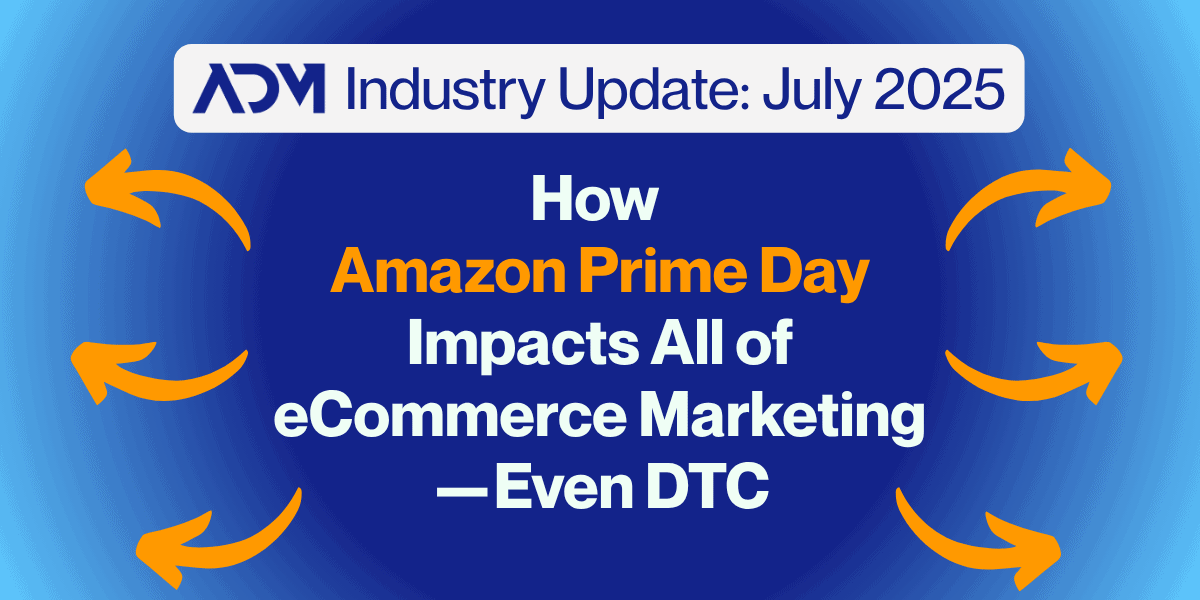Google Ads is a uniquely-powerful eCommerce engine that can help d2c brands rapidly grow their sales and revenue. But making the most out of its sales potential relies heavily on knowing how to balance campaigns across your entire sales funnel. With a bevy of campaign options and budget decisions to make, sometimes a little expert guidance is needed.
In this blog, we’ll try to go a little deeper than your average Google Ads tips blog to lay out some of the philosophies that underpin the strategies ADM employs to help our eCommerce clients shatter their goals.
Branded Search is for closers—use it!
Branded search is a point of contention for many brands: If their SEO is good and they typically show up when users search their brand name, why should they also bid on their name? The argument is that, by the time a user is searching for something by name, the user’s mind is probably already made up. But we’d counter that by saying that any time a user is searching for products on a search engine, they’re in a persuasive environment, and it’s important to do everything in your power to win that conversion.
If coffee is for closers, Branded Search is the most caffeinated member of the team. While it’s easy to understand the role of top-of-funnel tactics in grabbing the attention of curious early researchers, Brand Search can actually be key for closing sales and driving the final conversion.
Branded Search is important because there’s no way to keep competitors from conquesting on brand terms, which can ultimately deter prospective customers from moving forward – even if they were searching for a familiar brand. In the very least, brands should be “playing defense” with Branded Search to minimize the real estate that competitors are able to capture when bidding on their own brand terms.
This is also why it’s important to always consider a full funnel approach to marketing. Reviewing your Conversion Paths report in GA4 can be extremely helpful, because it will provide perspective on just how many touches it may take a typical buyer to convert. If the final touch needs to be paid for (especially in the form of a low-cost Branded Search click), then so be it—if the alternative means losing out on a purchase.
Non-Brand Search can be an effective awareness play
Anything that isn’t Branded Search is obviously Non-Brand Search, and its utility can vary widely from business to business and industry to industry. Advertisers must determine where it will best fit into their overall marketing funnel based on their specific business realities and choose the terms they target based on the intent they imply.
In some eCommerce verticals, high cost-per-clicks (CPCs) on Non-Brand Search can make the channel completely untenable as a reliable conversion driver. Non-Brand Search will often be broken into low-intent (top-of-funnel) and high-intent (middle-of-funnel) campaigns, though the vague queries that often populate Non-Brand Search results typically won’t reveal what the user is trying to do or find—which means it is rarely used for bottom-of-funnel purposes.
If you’re going to use Non-Branded Search for awareness/middle-of-funnel strategy, choose your keywords wisely. For instance, searches for a term like “guitar store” are unclear, because a user may intend to buy a specific instrument, browse through a large selection of multiple instruments, or find a relevant part or accessory that a guitar retailer would carry. A local store may not want to dedicate marketing dollars to getting clicks for searches like these, because the query is so vague that it’s not clear if they offer exactly what that user is seeking. Instead, that business may focus its top-of-funnel efforts on something like Demand Gen that is designed to help build awareness en masse for a much lower CPC.
But in eCommerce environments, many non-brand searches (even if still somewhat vague) can help put your business on the map. If a user searches for something like “electric guitar amp,” then the same retailer would likely consider targeting this term if they have a selection of amps available. And if the user has already been introduced to the business through another top-of-funnel tactic, they are more likely to click on this Non-Brand Search ad to learn more about the guitar store. This is Consideration, or middle-of-funnel marketing, in action.
YouTube Ads can be much more than an awareness play
YouTube has more capabilities than many advertisers fully utilize. The platform has over 2 billion unique monthly users, making it a powerful tool for Reach campaigns. But many brands don’t realize that it can also be an incredibly effective tool for driving action. To most advertisers, YouTube seems like a tool for getting their brand in front of an unfamiliar but relevant audience. But for the most sophisticated advertisers, YouTube is a treasure trove of capabilities that can support different stages of the funnel.
Because YouTube advertising resides within Google Ads, it shares the same impressive audience targeting capabilities. Advertisers can reach smaller segments of their audience with specific messaging meant to ease them further down the sales funnel or even drive them to take conversion actions.
While there’s no magic formula that is applicable to all businesses, YouTube is a great medium for communicating who your brand is and helping prospective customers understand your value proposition. YouTube gives advertisers a way to show (not tell) who they are and what they’re about in a way that other Search tactics can’t. And because of tools like advanced targeting, video sequencing, and even the ability to serve in additional placements around the web, there’s really no excuse for advertisers to not actively incorporate YouTube into their overall marketing mix.
Google Ads extensions aren’t just add-ons
Extensions are the additional feature that can be deployed alongside the core content in your search ads—headlines and ad copy. They range from price previews to image extensions and other shortcuts to access your site or contact your business. While it may be easy to think of “extensions” as “add-ons” that may give your ads a little boost, it’s better to view them as essential features that should be used to the fullest extent possible to produce better eCommerce results.
Ad extensions are vital for a few reasons. First, they can help the end user find out more about the advertiser or why they should consider one brand over another. A well-organized Structured Snippet extension might lay out an overview of the types of products a business sells, which can augment your Non-Branded Search efforts by allowing users to quickly determine whether your offerings relate to their search. In the case of our guitar retailer example above, these snippets include things like “electric guitars,” “acoustic guitars,” “bass guitars”, “amps and accessories,” and “recording equipment.” Because your Search efforts will only incur charges if users click your ads, this can help you expand your keywording without spending more.
Second, Ad Extensions extend the advertiser’s visual presence on the search results page. Being that there’s only so much real estate to claim, but also knowing that most users don’t want to scroll very far to find what they want, maintaining a noticeable presence while creating a first impression is extremely important. By integrating all relevant ad extensions, you increase your footprint and push competitors further down the page.
Third, Google weighs an advertiser’s use of Ad Extensions in its Ad Rank equation, which can help reduce costs per click and help a brand get their ads into a broader range of auctions. That means: more eyeballs, fewer dollars. In terms of best practices, we always recommend that eCommerce brands utilize all relevant and applicable Google Ads Ad Extensions to the fullest extent.
Performance Max can work across the entire sales funnel
One of the most exciting developments for eCommerce marketers in recent years has been the advent of Google Ads’ Performance Max campaigns. While Performance Max is often viewed just as a replacement for Shopping ads, it’s actually much more sophisticated than that.
Performance Max is designed to encapsulate the entire funnel and to use a data-driven approach to help move a user through each step of your funnel based on their behaviors. Its algorithm evaluates user intent based not only on what they’re searching for, but also on other historical patterns they’ve exhibited. Factoring all this in, these campaigns can serve ads in different formats, such as Display or Demand Gen, to continuously move individuals along the purchase journey.
If the Performance Max algorithm doesn’t conclude that a given user is familiar with the advertiser, it’s more likely to show them a Video or Display ad to help build familiarity. However, if it recognizes that the user is someone who has interacted with your eCommerce brand previously, the campaign will be more likely to manifest as Shopping ads when they search for products in your categories.
At ADM, we place a huge emphasis on this campaign type. The biggest thing is to make sure these campaigns are supporting, enhancing, and supplementing the other tactics or channels at each step of your sales funnel to ensure they don’t end up competing against each other. We use a custom script to understand the ratio of ad types Performance Max is serving in a campaign: If it is showing an excessive proportion of Video and Display ads, it’s likely that those other campaigns aren’t effectively serving their purpose and need to be optimized to carry more top-of-funnel weight. It could also mean that your Shopping Feed hasn’t been built to a high enough standard and thus your brand isn’t getting into as many relevant bottom-of-funnel auctions as it should be. For eCommerce clients, we aim to steer at least 80% of Performance Max spend towards Shopping results to maximize its conversion-driving power.




